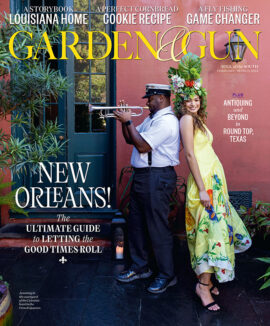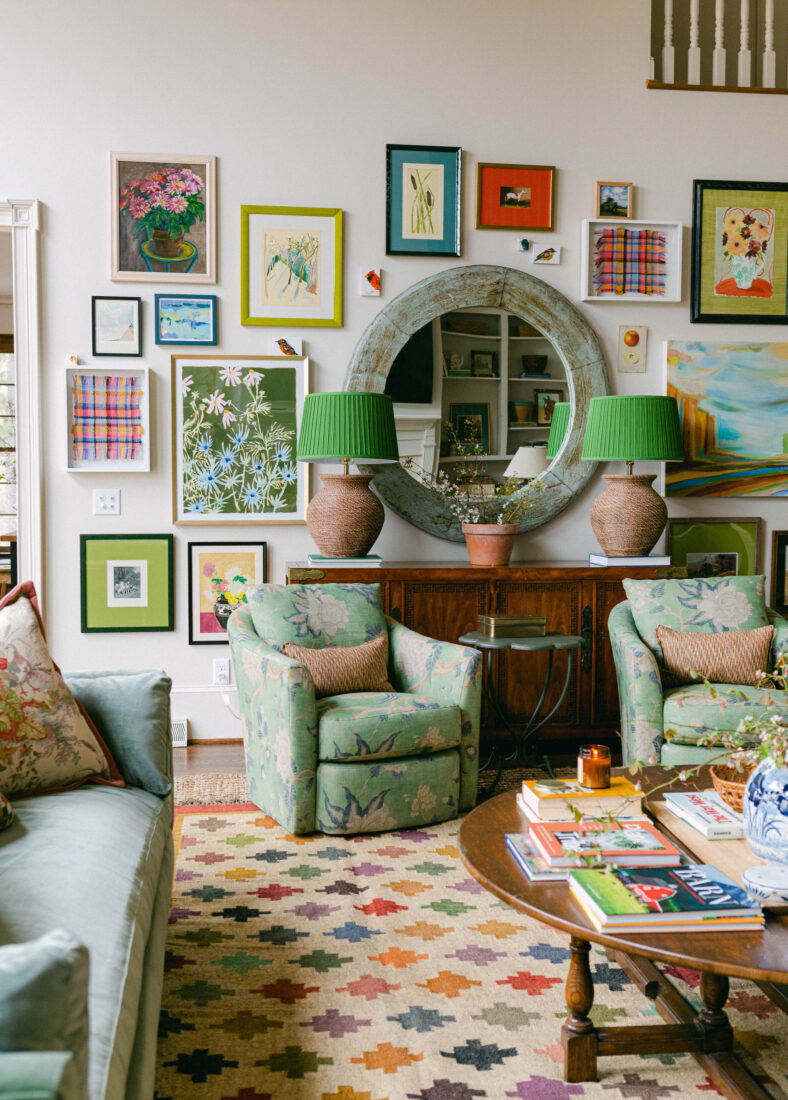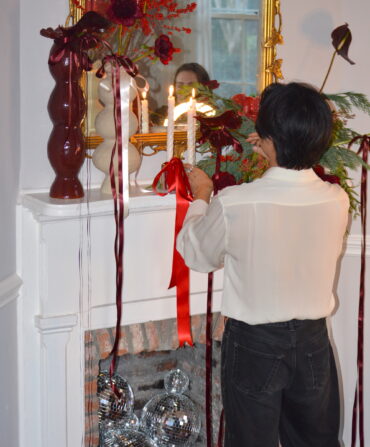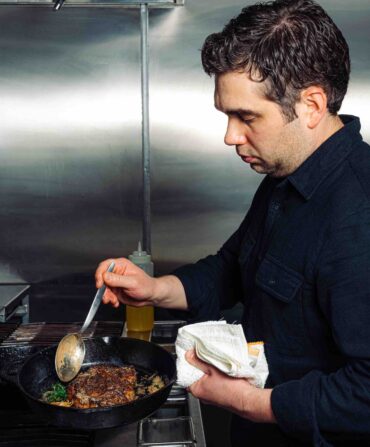What the design world calls “maximalism,” Southerners might just call “life.” It’s a style of decorating that can take many forms—and is increasingly popular in magazines and on Instagram—but generally combines patterns, textures, sometimes new pieces, and often vintage or passed-down heirlooms.
Across the South, folks have long known how to imbue a space with personality: Think of all the bold colors and wallpaper at the Colony Hotel in Palm Beach. Southerners are also pros at displaying collections: oyster plates, copper cookware, or this wild assemblage of colorful Ozark pottery.
That collector, Daniel Barrett Mathis, whose cheeky Instagram handle @notaminamilist hints at his incredible array of plates, artwork, shells, and bric-a-brac aplenty, is just one of many Southerners who have a knack for maximalism. Here, Mathis and interior designers and collectors across the South share their top tips for making the style work:
Once more, with feeling.
“As Southerners, we are really good at attaching sentimentality to just about anything,” says Amanda Louise Campbell, an interior designer in Greenville, South Carolina. “We also love a tradition. Those two things combine to make telling a story about who we are and the way that we live through our collections come naturally.”
Campbell collects art, pottery, shells, books, and all things canine. “While my husband and I were dating, we were at an antique store and bought a little dog figurine that looked like our Lab/beagle mix, Maisy,” she says. “Kevin then started picking up little dog figurines for me for just about every occasion. That then morphed to dog art, opening a new portal.”
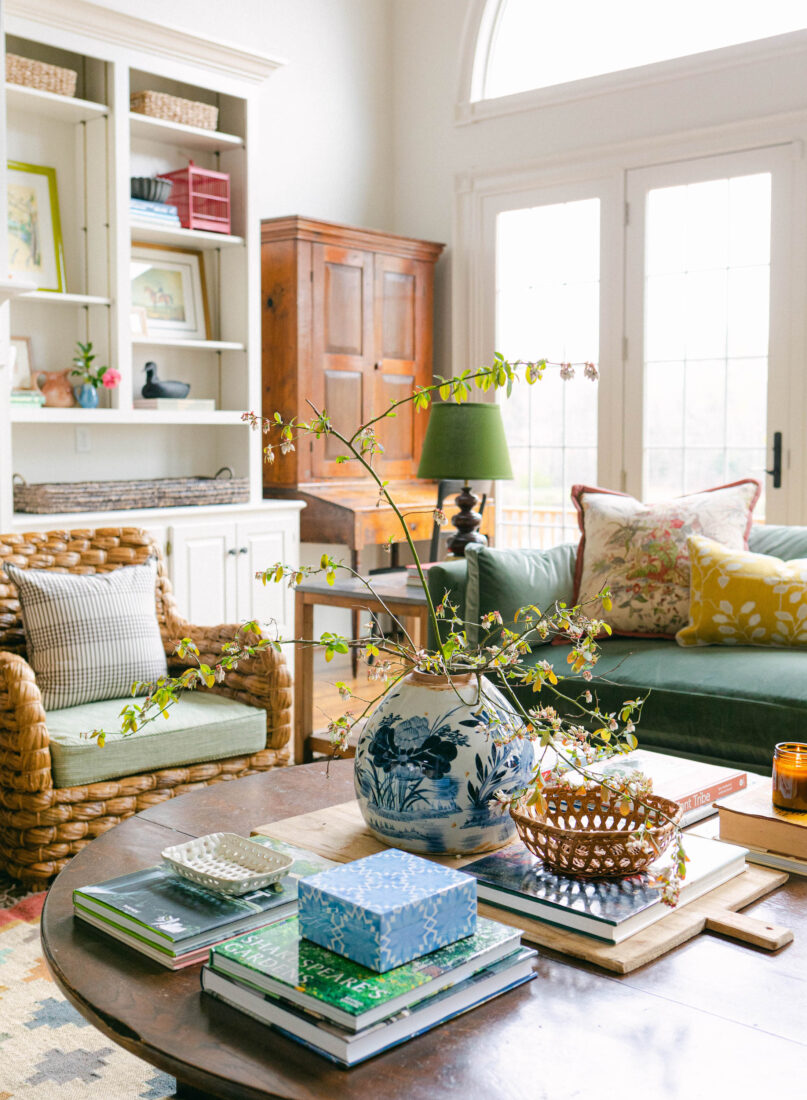
In her Nashville home, the tastemaker and secondhand-goods-savant Libby Callaway surprises even herself sometimes with what she’s gathered. “I had no idea that I was populating my primary bathroom with swans until I started counting them,” she says. “From the gilt on the deco mirror above the tub to the sconce on the wall to the floaty-toy that my grandparents used to put in the tub with me when I was a little girl, they have a definite presence. Other themes that have popped up without me knowing: big cats like leopards, cheetahs, and lions, hearts, circles, dragons, frogs, faces as masks and busts, checkerboard patterns, black lacquer, copper.” (See another epic collection of copper in New Orleans here.)
Skip trends and follow what you love.
“I don’t care about provenance,” Callaway says. “My home has very few pedigreed pieces in it. I buy what I like, regardless of era, style, or origin, whether it’s from an auction house, thrift store, or HomeGoods. In many cases, that extends to their condition. All of my deco rugs are patched or have worn holes in them; more than a few tables have nicks. To me, it just makes them more interesting. Like they’ve had lives before me.”
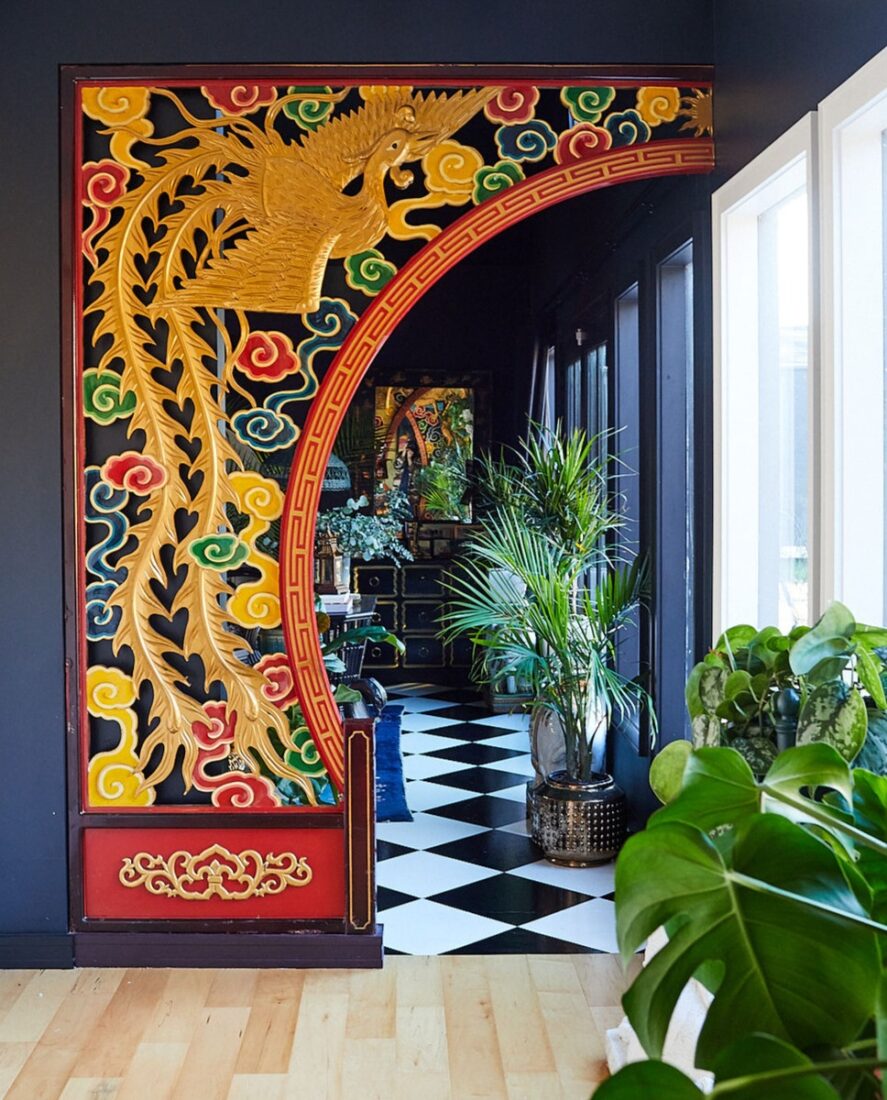
“As long as you are buying and collecting things that you love,” Campbell adds, “maximalism will feel authentic and layered in a natural way.”
Group collections.
Every single “maximalist” we spoke to says there is more power in groups of similar objects than in a smattering of things scattered here and there. “I always find that items are more impactful when displayed in groups, and I think repetition of a collection of similar things keeps things from looking cluttered,” Campbell says. “Likewise displaying random things you love or sentimental items such as a love note or my babies’ first pairs of Converses, along with stacks and stacks of books, somehow grounds items and ties them together.”
Mathis, the Ozark pottery fan, assembled his pieces to look like a rainbow cascading up and down tall, dark shelves. “People might be surprised at how anal I am, the thought that goes behind placing a taller piece here and grouping a balance of colors over there,” he says. “And there’s no easy way around it—I dust a lot.”
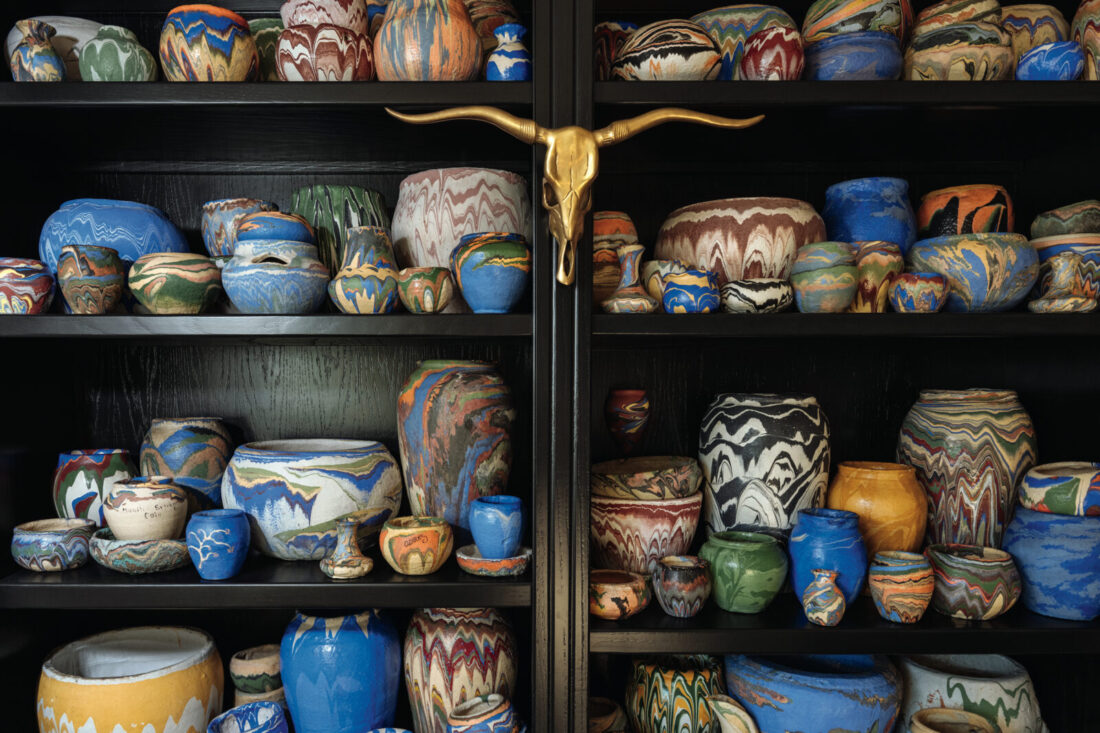
Let’s talk about wallpaper.
The interior designer Barrie Benson recently designed the grand Schumacher boutique and showroom in Charlotte, popping the design house’s wallpapers among oak cabinetry and antique mirrored walls, and above a terrazzo floor. In her own home, she installed the new Clare Rojas collection, a collaboration between Benson’s company Peg Norriss and Schumacher.
“My favorite maximalist moment is our guest bedroom, where we dressed the walls and drapery in [Rojas’s] Bleeding Hearts fabric,” Benson says. “This application is rooted in traditional design, however the pattern also has a contemporary sensibility and feels at home in our architecturally modern house. We then mixed in other prints on the upholstered bed, custom lampshades, and pillows for a collected look.” (Benson’s work is also featured in G&G style director Haskell Harris’s new book, The House Romantic, a lovely ode to the ways Southerners layer meaning and beauty in their homes.)
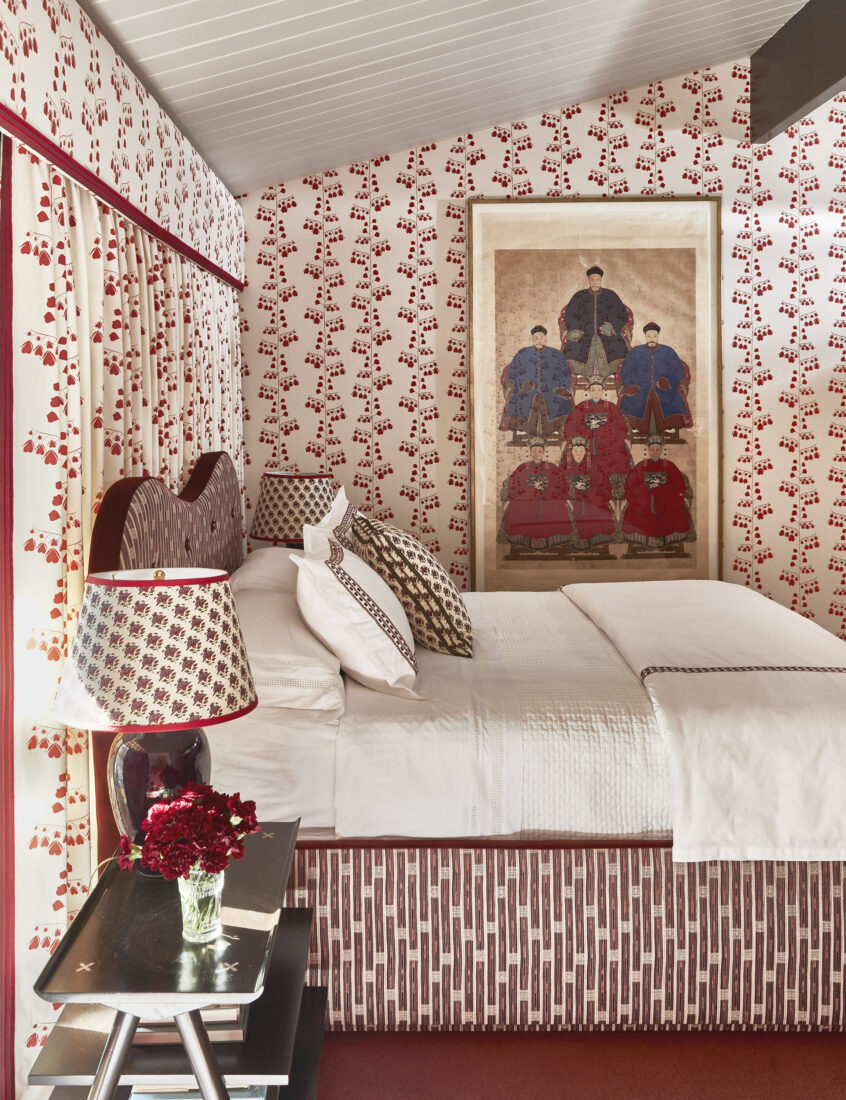
That mixing of styles like your mama might is okay, even if your styles are different: “I got my early maximalist inspiration from my mother’s home,” Callaway says. “Her style is much more traditional, but we share a lot of DNA—literally. I mean, there are five different coordinating wallpapers in her kitchen alone. But you’d only know that by counting: Looking at the kitchen as a whole, it doesn’t look mismatched or cluttered. There’s a cohesiveness to it, right down to the blue and white linoleum checkerboard floors.”
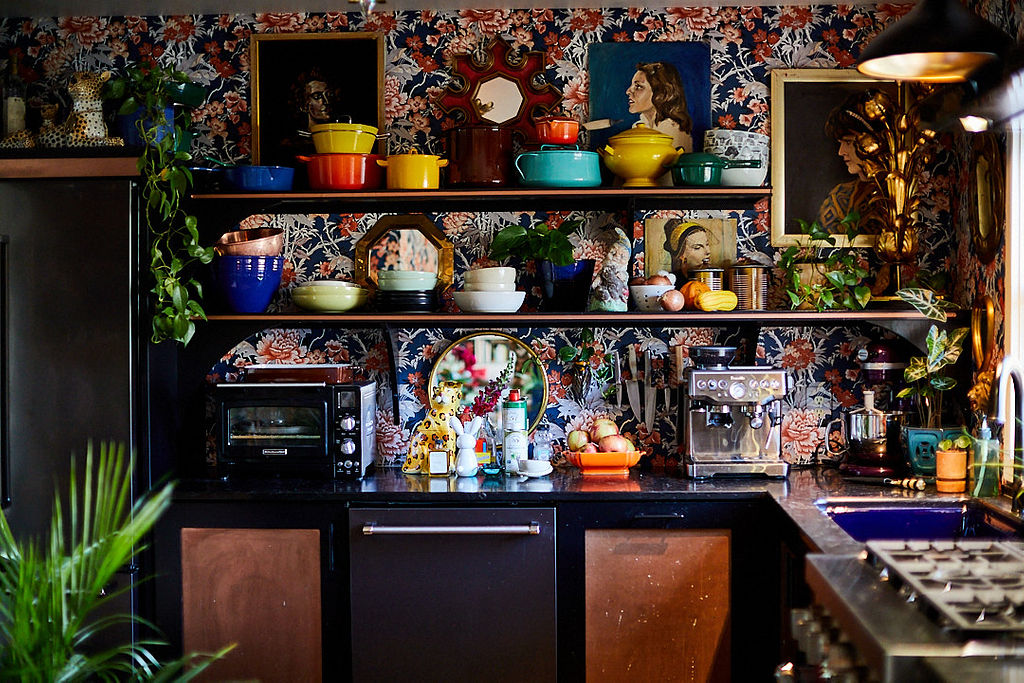
“There are seven papers total in my house,” Calloway continues, “which makes me feel like I’m slacking. After a few mess-ups, you’ll learn what takes a room from interesting to hot mess. I would love to say it’s like that Coco Chanel riff that says you should always take one thing off before leaving the house. But it’s not that easy. Even in a room full of colors, patterns, and stuff, there is a balance, and sometimes it takes a long time to train your eye to see it.”
If you have to see something every day, it might as well make you happy.
Many designers explained how kitchen and bathroom items that serve a function don’t need to be boring: “A different shade of wine glass or a new plate can breathe new life into a table,” Benson says. “Tablecloths also can make a nice change. If it doesn’t seem like it will match, flowers can help connect the dots. Also, who doesn’t love a new tray. It keeps books and other collected objects from feeling like random floating tchotchkes and is a way to contain the collection.”
“When we designed our kitchen, I wanted there to be openness and areas to display items we use daily,” Campbell says. “This meant purging the not-so-beautiful dishes that had been lying around since college, and instead displaying collections of things that tell a story in the space and are just as functional.”
In her gorgeous new book, Life in the Garden, the Virginia-born interior designer Bunny Williams shares a few of her collections, including lusterware pitchers. They fill the shelves near a sink, doubling as both a thoughtful display and a useful vase collection when she wants to make a floral arrangement from her garden.

And a final word of caution from Benson: “Don’t throw out your grandmother’s china. I promise you will love it one day. Mix it with something new to give it a new life.”
Shout out another maximalist you admire:
Campbell: “My friend and Greenville artist Jean Wilson Freeman is always an inspiration for me. She finds joy and sentiment in daily items and amasses them, creating a maximalist home full of color and personality.”
Callaway: “Discovering interior designers whose tastes I saw reflected in mine was a revelation. Learning about Tony Duquette changed my life. Him, David Hicks, Billy Baldwin, and Gloria Vanderbilt are four of my touchstones.”
Benson: “Celerie Kemble. She is a maximalist in spirit and design sense. Her interiors are layered with gorgeous finds. I recently had tea with her at her new brownstone and am still thinking about it.”
Mathis: “[The late] Iris Apfel. I think she exudes what is often the key to successful maximalism—no fear to be intrinsically individual and express your personal style.”

